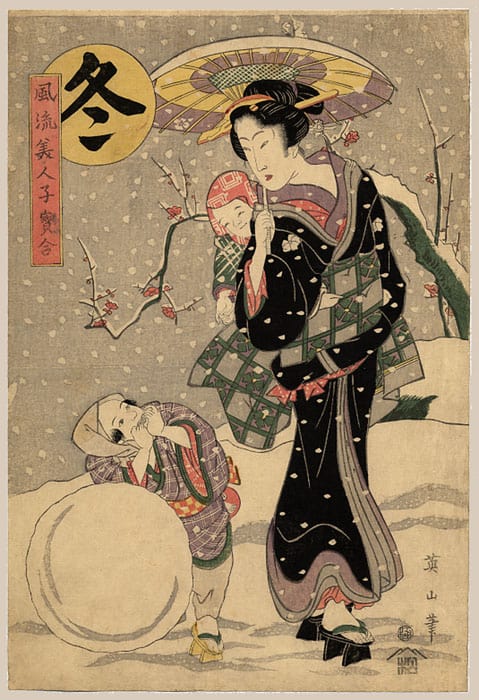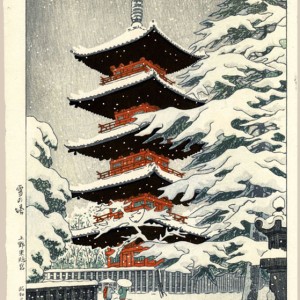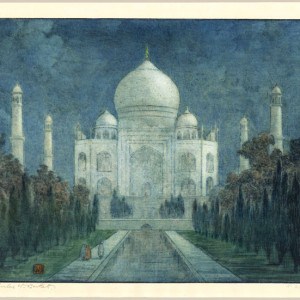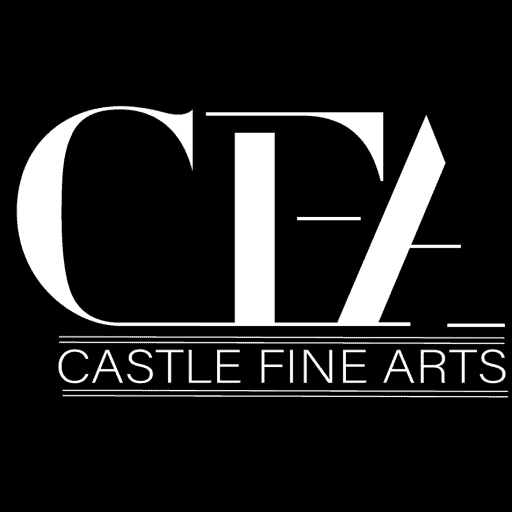Eizan, Kikukawa (1787 – 1867), “A Woman and Children by a Snowball”
Category:
Price:
Status:
SOLD
Catalog ID
A0924
Artist
Kikukawa Eizan
Title
A Woman and Children by a Snowball
Medium
Original Japanese Woodblock Print
Series Title
Elegant Beauties and Precious Children
Edition
First
Date
C.1810
Publisher
Reference No
Size
14 x 10 "
Condition
Very fine.
Price
Shipping (US)
$45.00
Shipping (Non-US)
$95.00
NOTES:
Eizan was the most prolific, longest-lived and ultimately the best of the late followers of Utamaro, who attempted to carry on the master's bijin style after his death in 1806. Along with Kikumaro, Tsukimaro and Utamaro II, Eizan has generally been dismissed by connoisseurs as a plagiarist of Utamaro's late style, but his work in fact develops, like that of most ukiyo-e artists, from a close identification with a leading master to a studied independence, and contains pieces of remarkable beauty and interest. ukiyo-e artists with whom he is often associated, Eizan was not an actual pupil of Kitagawa Utamaro, but studied originally with his father, Kikugawa Eiji, a Kano style painter and fan maker, and later with the Shijo artist Suzuki Nanrei and the Hokusai pupil Hokkei. Few traces of this eclectic training can be seen in Eizan's early work, produced shortly after the death of Utamaro and for the most part in that master's style. In the following decade, however, as Eizan reached artistic maturity, he began to develop his own figural style, still focused for the most part on prints of beautiful women (bijin-ga). Eizan's work retains the sensitivities and lyricism that marks the Utamaro style, however, not following the earthier realism and more overt sensuality of Kunisada and Ikeda Eisen in their . Eizan, like Toyokuni I in actor prints, is the last manifestation of the classical ukiyo-e style in bijin work, with harmonious colors and graceful lines and subjects. After him, one senses the introduction of a different aesthetic, with harsher colors, angular lines and less ethereal material, more of an emphasis, in sum, on the material weight of earthly life, rather than its transformation into something of elegance. With Eizan, the alchemy of elegance is still alive, and in his best work, properly produced, he can cast a magic glow over the forms of the world and create lightness and grace.
Guaranteed safe checkout








